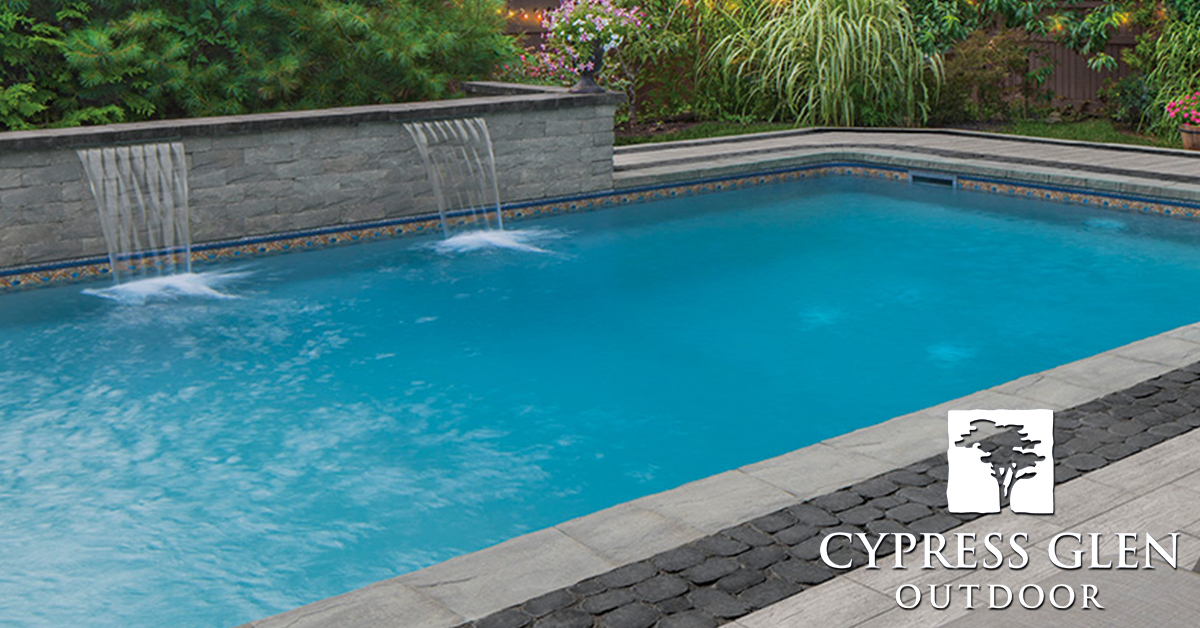
What is pool coping? You’ve decided to build a beautiful new backyard pool! You have the place, size, and shape decided, and maybe even some thoughts on what type of pool deck materials you’d like used. But have you thought about the types of pool coping you want? Do you even know what it is?
What Is Pool Coping
Pool coping is technically part of the pool deck. The edging or border around the pool provides a perimeter, creating a protective cap and decorative edge. In addition to finishing off the look of your pool, it also has some functionality. This establishes a barrier between the pool itself and the deck. This coping prevents water from leaking into the ground while improving the pool’s overall look.
Why Do You Need It?
On top of making the pool’s finished edge, pool coping comes in non-slip materials for safety purposes. This material is the last barrier between the deck and the pool, so having something that will be a slip-and-fall deterrent is essential for pool safety. The coping prevents water from getting behind the pool shell and seeping into the ground. It is slightly tilted away from the pool to avoid pooling along the edge. The coping is also an area that can create add-ons to your pool, such as lighting, water features, or seating.
Types of Pool Coping
There are five main types of coping, each offering a different aesthetic and many materials to choose from. Top mount, or half-round, is the most common coping for vinyl inground pools. This simple coping provides a rounded edge from the deck directly into the pool with no overhang.
- Cantilever coping uses a foam form attached to the pool shell to create a mold. Concrete is poured, creating an edge connecting the deck to the shell, extending slightly over the pool edge.
- Flat mount is more of an edge than a type of coping. This track runs along the pool liner.
- Bullnose coping is made from bullnose pavers placed along the pool’s edge. The rounded edge extends slightly over the pool edge to create a smooth appearance. It is also easy to grab and use to climb out of the pool, making it safe.
- Exposed aggregate is an edge that can be created with a poured cement or concrete deck. When the paste is removed, it exposes the natural edging of the poured material. This raw edge proves a very slip-resistant coping surface.
- Square edge coping creates a 90-degree hard-lined edge. It is more modern and sharp than the smooth bullnose.
In addition to the coping style, the materials to choose from include, but are not limited to, concrete, pavers, marble, brick, sandstone, flagstone, bluestone, tile, vinyl, or composite. Take a look at more design styles and features on the Cambridge Patio Paver website.
Installation
Pool coping installation comes about halfway through the building process. First up is excavation and shell construction. This step is where your land is dug out, the pool’s shape is put in, and then concrete or fiberglass creates a lining. Plumbing and electrical are following, and lighting and filtration systems are installed. After this, the surrounding land is usually graded in preparation for the deck build.
Pool coping is now up, the first step of the pool deck installation. The coping is put along the pool shell as a border and applied with some type of adhesive. This is when the coping of your choosing goes in! The coping is followed by deck installation and then any final touches like sealing water features or landscaping.
A pool is a labor-intensive endeavor, but the process is smooth with the right help! When picking the type of pool coping and subsequent deck material, you know Cypress Glen is here to help! We are your go-to coping company, offering knowledge, various materials, and flawless installation. Let Cypress Glen Outdoor build the backyard you’ve been dreaming of!

